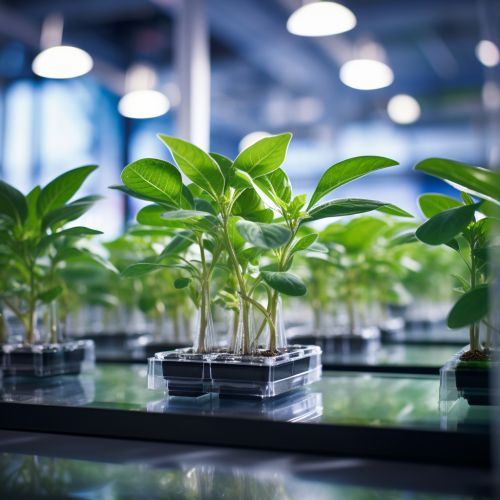The Biological Mechanisms of Plant Response to Cold Stress
Introduction
Cold stress is a major environmental factor that limits the productivity and geographical distribution of plants. Understanding the biological mechanisms of plant response to cold stress is crucial for improving plant resistance and productivity. This article delves into the complex network of molecular and physiological responses that plants employ to survive in cold conditions.
Cold Stress in Plants
Cold stress in plants can be categorized into chilling (<20°C) and freezing (<0°C) stress. These stresses can cause changes in cellular metabolism, membrane fluidity, and gene expression, leading to damage or even death of the plant. The ability of a plant to survive cold stress depends on its ability to perceive the cold signal and respond appropriately. This involves a complex network of signaling pathways and gene regulatory networks that are still being unraveled by scientists.
Cold Perception and Signal Transduction
Plants perceive cold stress through changes in membrane fluidity and alterations in intracellular calcium levels. The cold signal is then transduced through a series of signaling molecules, including calcium, reactive oxygen species (ROS), and phospholipases. These signaling molecules activate a cascade of events leading to the activation of cold-responsive (COR) genes.


Cold-Responsive Genes
The activation of COR genes is a key step in plant cold acclimation. These genes encode for a variety of proteins that help protect the plant from cold damage. Some of these proteins include antifreeze proteins, dehydrins, and late embryogenesis abundant (LEA) proteins. These proteins help protect the plant cells from freezing damage by preventing ice crystal formation, stabilizing membranes, and protecting proteins from denaturation.
Role of Plant Hormones in Cold Stress Response
Plant hormones, including abscisic acid (ABA), ethylene, jasmonic acid, and salicylic acid, play crucial roles in the plant's response to cold stress. These hormones regulate the expression of COR genes and modulate the plant's physiological response to cold stress.


Genetic Engineering for Cold Stress Tolerance
Genetic engineering has been used to improve plant cold tolerance by overexpressing COR genes or manipulating hormone signaling pathways. For example, overexpression of the C-repeat binding factor (CBF) gene, which regulates a large number of COR genes, has been shown to enhance cold tolerance in several plant species.
Conclusion
Understanding the biological mechanisms of plant response to cold stress is crucial for improving plant resistance to cold and enhancing agricultural productivity. While significant progress has been made in this field, much remains to be understood about the complex network of signaling pathways and gene regulatory networks involved in plant cold stress response.


